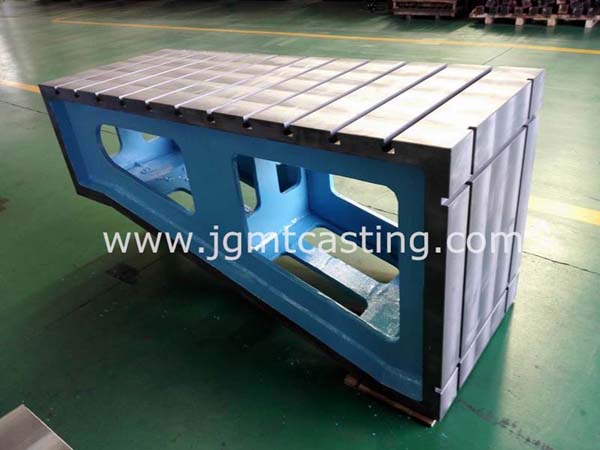There will be some product defects in the production process of cast iron T-slot flat plates. Correct methods must be used to make up for it. The defects of the working face of the cast iron platform are important parts that cannot be ignored. The main defects of the cast iron platform include: pores, sand holes, sand inclusions, shrinkage porosity and so on. The service life of cast iron platform is closely related to defects. Therefore, the defects of the cast iron flat plate must be treated strictly according to the process requirements.

1. The following measures can be used to prevent chemical sanding of cast iron T-slot flat castings:
(1) Adding about 5% of coal powder to the wet clay sand can avoid the sticky sand of small and medium-sized castings. The ash content of the coal powder used in foundry should be less than 10%. In order to avoid the accumulation of invalid coal powder and dust in the sand system, every time In each production cycle, some old sand should be eliminated and some new materials should be added. The waste amount of old sand is generally about 10% to 15%.
(2) The source of sand supply is different, the purity of foundry sand, the sintering point, and the refractoriness are very different. Low-purity silica sand with a sintering point below 1200°C will promote sand sticking; high-purity silica sand with a pouring point above 1450°C Or non-quartz sand such as wrong sand, chromite sand, etc. will reduce sand sticking.
(3) Because the sintering point of the water glass sand is low, paint is used. Sodium silicate and old sand in the sand should not be too much. Adding 1% to 2% of coal powder in the sand can also help avoid sand sticking.
2. Preventive measures to prevent sand sticking of cast iron T-slot flat castings:
(1) Try to use foundry sand with finer grain size.
(2) Avoid high metal hydrostatic pressure head; the height of the riser should not be too high under the condition of satisfying the feeding of the casting; avoid pouring the ladle directly into the sprue at a high position, and the basin-shaped sprue cup can be used to buffer the metal flow. And form a constant high static pressure head.
(3) Avoid "explosion" or "choking" of the mold. Do not add excessive coal and moisture to the molding sand. Try to open vents and vents for the mold and core to increase the permeability of the mold.
(4) The coating used for the mold or core. That is, the filling type, the gap between the sand particles on the top layer of the core. If the coating is too thick, it may crack and cause the molten metal to penetrate into the sand. At this time, use a thinner coating in the second layer, and then Then use normal or thicker paint.
(5) The sand mold should be tight and good. The machine modeling should not be overloaded, and the compressed air supplied to the molding machine should be maintained at a specified pressure to avoid using excessively wet or long-term storage. Because it is difficult to compact, the core box vent (plug) must not be blocked ; The use of resin sand for molding and core making cannot rely solely on the good fluidity of the molding sand, but must be compact and supplemented by vibration.
(6) Reduce the dynamic pressure generated in the mold. The mold should be provided with more vent holes and more air holes; the parting surface of the mold with high compactness can be provided with an exhaust groove (aeration groove or aeration groove).









